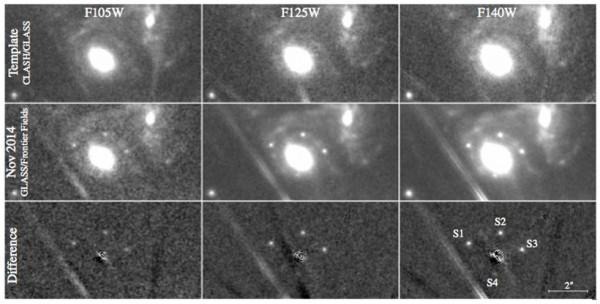Scientists Discover Distant Supernova In Einstein Cross Configuration
Some of the greatest scientific theories ever put forth came from Albert Einstein. Some of his theories may never be proven, but scientists are always working to prove Einstein's theories and others. Scientist Dr. Patrick Kelly from Berkeley was looking at images taken by the Hubble Space Telescope and hoping to find distant galaxies.
Kelly found something that might be of more interest to the scientific community. What Kelly found was images of a distant supernova that appears four times in Hubble images and each time it is in slightly different places and slightly different times. The reasons it appears to move is due a gravitational lensing putting the supernova into a configuration called an Einstein cross.

The discovery is hoped to help scientists measure assumptions about the Universe when the star that created the supernova exploded. Gravitational lensing was predicted by Einstein who figured that with enough mass present light could be bent. Scientists have been looking for a supernova that could be used to study this phenomena for years and have finally discovered this one.
This supernova has no name just yet, but the naming process is underway. The idea of using a supernova to observe gravitational lensing was first put forth by astronomer Sjur Refsdal in 1964. Since this astronomer put the idea forth, the team studying the supernova hope to call it "Refsdal." The appearance of the supernova four times is said to be caused by a dark matter mass between the supernova and observers on Earth.
SOURCE: TheRegister
